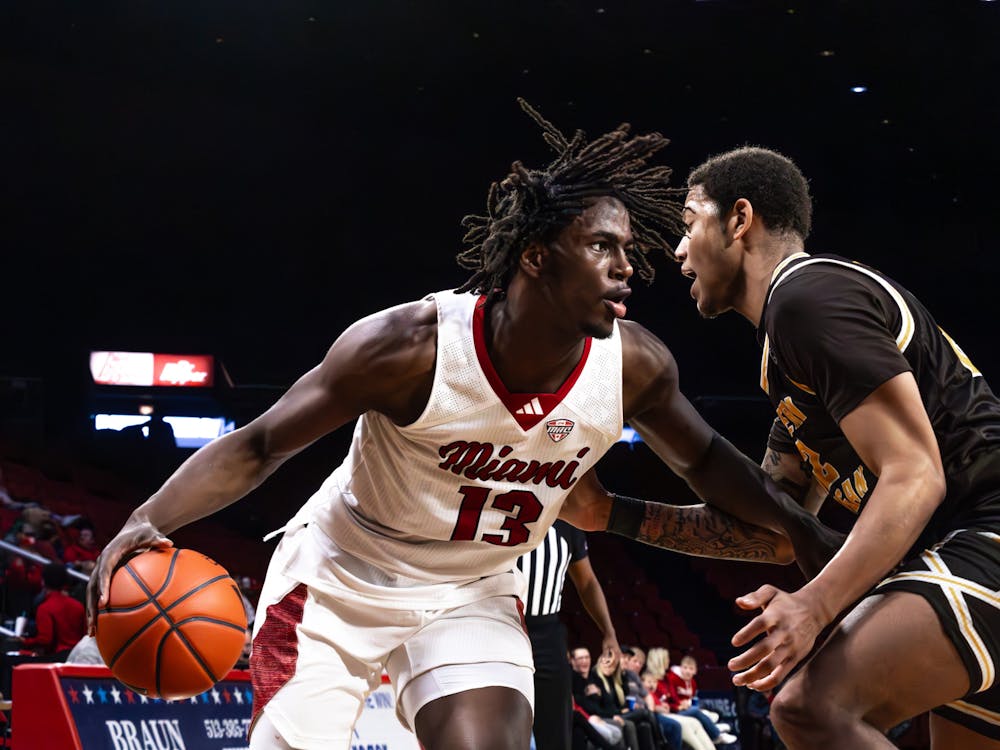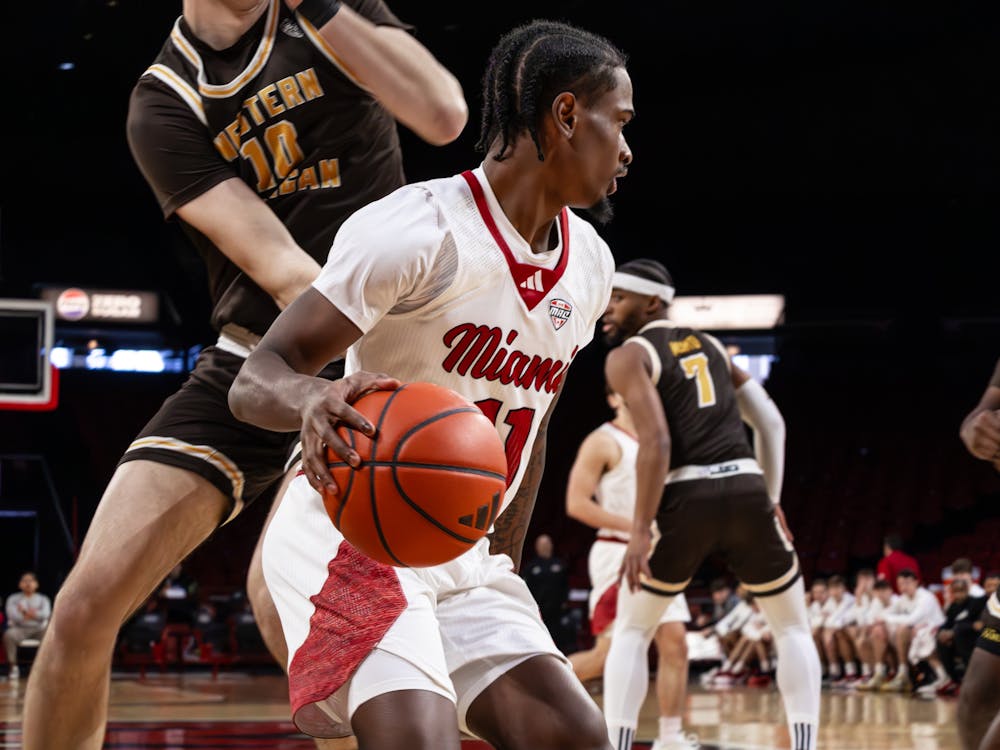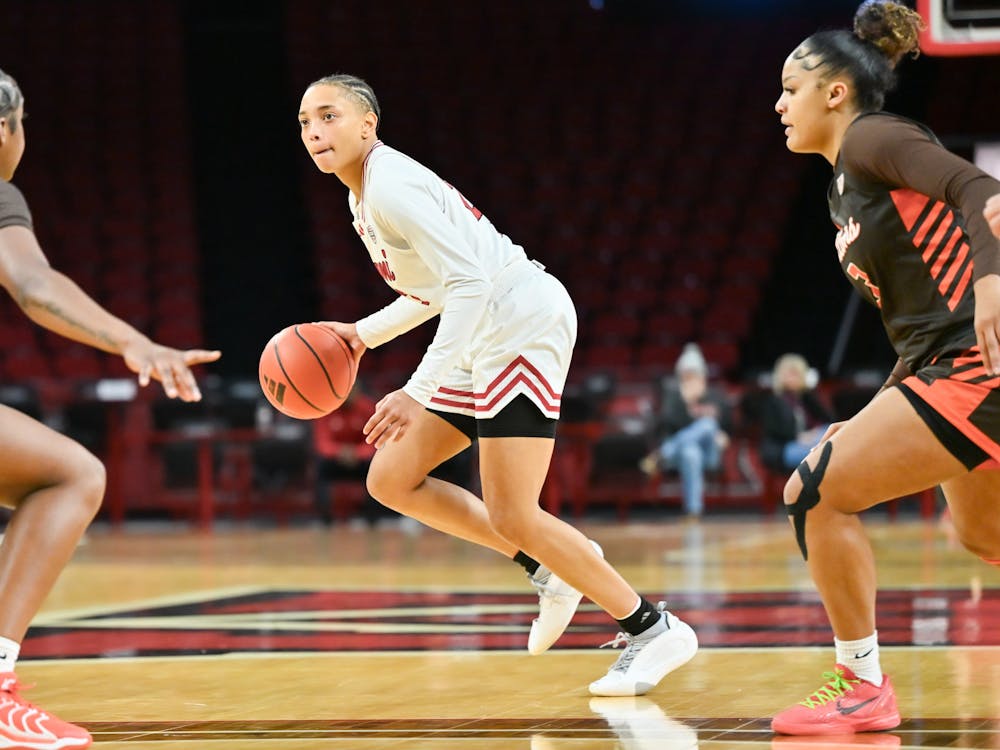By Grace Remington, Sports Editor
When a woman knocks on the door of the sports world, she is often met with snubs and doubts.
After Lesley Visser entered through this rigid door and blazed a path for the first class of female sports reporters in 1976, hundreds of women have broken through the barrier of the historically male-dominated industry.
However, "how far we've come" does not equal how far we need to go. Though women have climbed their way into locker rooms and behind sports desks, they still struggle to gain acceptance and respect.
"For as far as we've come, it's still not what I think people believe it to be," Dianna Russini, sports anchor for NBC4 Washington, said. "I think because so many people see women on the sidelines, they assume that it's an even field. But if you watch any pregame or postgame show of the analysts and the people calling the shots on the panels, it's very rarely women."
Indeed, sidelines are frequented by female reporters, while a play-by-play or color commentator or an analyst of that gender is a rarity.
"It's untapped territory right now," Russini said.
According to the Status of Women in U.S. Sports Media 2014 report released by the Women's Media Center, 85.4 percent of staffers in sports print media are male. Cited data from the Associated Press Sports Editors shows that 90 percent of sports editors are male.
Dana Jacobson of CBS Sports Network is the only woman among the 184 sports talk radio hosts featured on Talkers magazine's 2013 "Heavy Hundred," which lists the most important sports talk radio hosts in America.
These statistics beg the question: why aren't there more women sports journalists?
Taunts, judgments and abrasive comments from viewers and readers greet a woman when the door is finally opened to her. Moreover, the negative remarks have nothing to do with her actual writing skills or performance.
"I get hate mail about how I dress, how I look, how I interact with male athletes," ESPN writer Chantel Jennings said. "Those are personal attacks."
Enjoy what you're reading?
Signup for our newsletter
Russini experiences more of the same.
"Sometimes it's not even vocal judgment, it's their body language," Russini said. "You get a look like 'what do you know about football?'"
An excuse commonly heard is that women have never played the game, so they can't possibly understand the sports on which they report.
"If we looked at all journalism in that light, the only people who could commentate on how President Barack Obama is doing right now is George W. Bush," Jennings said. "Do you believe that would be an accurate way to write about politics - if the only people who could write about presidents are people who have been president? Is that actually something you'd want to read? Is that actually something that you think would be educated?"
Damon Amendolara, host of "The DA Show" on CBS Sports Network, echoes the sentiment.
"I mean I've never played the game," Amendolara said. "There's plenty of guys who have never played the game but still have credibility … if somebody says you don't know what you're talking about because you're a woman, that's stupid, because how many guys are saying that who have never played the game beyond a high school level?"
As for why the problem exists, Jennings suggests generational differences.
"It takes a while to grow accustomed to something that you're not already accustomed to," Jennings said. "A lot of the angry emails I get are from middle-aged white men who maybe became sports fans when they were six, when every single person they saw or heard looks like their dad … for me to be saying the same things but looking so different, I think sometimes it's hard."
How can the door be propped open, so that aspiring female reporters are no longer left to pry at it?
"We need more diversity of every kind," Amendolara said. "And that includes women in spots that are not traditionally filled by women. I think we need African Americans, and Asian Americans, and Latin Americans. The big problem is that sports media has been dominated by old white guys for a long time … and that's not the world. It's not your viewership or listenership or readership anymore."
Neilson reports that in 2013, at least one third of TV viewership was female for all NFL, NBA, MLB, NHL, PGA, MLS and NCAA football and basketball broadcasts. ESPN reports that their ratings have grown 12 percent overall among women since 2010.
It seems logical that the media outlets should reflect those demographics. But, as female journalists wait for sports enthusiasts to acknowledge this shift, they continue facing unfairness.
"The key is to address those things when they happen," Jennings said. "If someone writes me a mean email I always respond … I don't believe in being silent all the time."
Progress is continually made in this way, but the ultimate goal line is distant. When this distance is covered with trust in and enthusiasm for female talent, then, and only then, will the door to the sports world freely swing open, and women can breathe a sigh of relief.




